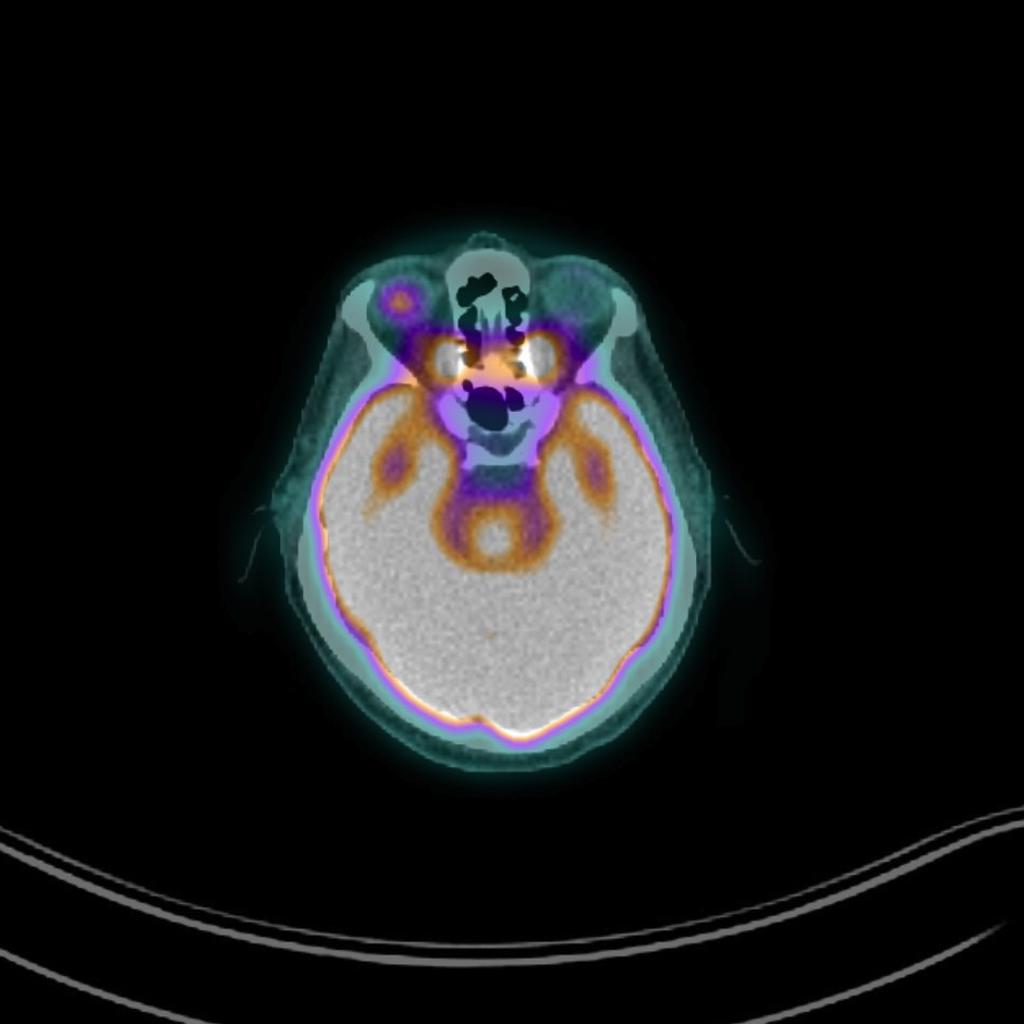Uveal melanoma other imaging findings
|
Uveal melanoma Microchapters |
|
Diagnosis |
|---|
|
Treatment |
|
Case Studies |
|
Uveal melanoma other imaging findings On the Web |
|
American Roentgen Ray Society Images of Uveal melanoma other imaging findings |
|
Risk calculators and risk factors for Uveal melanoma other imaging findings |
Editor-In-Chief: C. Michael Gibson, M.S., M.D. [2]Associate Editor(s)-in-Chief: Simrat Sarai, M.D. [3]
Overview
Other imaging studies of uveal melanoma include PET scan, ultrasound biomicroscopy, optical coherence tomography, color fundus photography, fluorescein angiography, indocyanine green angiography, transillumination, and photography.[1]
Other Imaging Findings
Positron Emission Tomography Scan
A baseline PET scan of the liver and other abdominal organs is advised in patients with a malignant uveal melanoma. Tumors that are too small will be identified by this study.

Ultrasound biomicroscopy
Ultrasound biomicroscopy is a special type of ultrasound that uses sound waves at even higher frequency than ultrasound to image the front parts of the eye.
Optical coherence tomography
Optical coherence tomography is a test that uses light waves instead of sound waves to create very detailed images of the back of the eye (fundus).
Color fundus photography
With color fundus photography photographs of the fundus are taken, that help to show what the tumor looks like before and after treatment.
Fluorescein angiography
Fluorescein angiography is a procedure to look at blood vessels inside the eye.
Indocyanine green angiography
Indocyanine green angiography is a procedure to look at blood vessels in the choroid layer of the eye.
Transillumination
Transillumination is an exam of the iris, cornea, lens, and ciliary body with a light placed on either the upper or lower lid. This procedure is used to examine eye structures for any gross abnormality.
Photography
High resolution digital cameras are used to take pictures of the inside and outside of the eye and to view the structures in the back and front of the eye. These photographs are important for documenting the tumor and its relationship to important structures of the eye. By comparing photographs before and after treatment, they can help determine whether the treatment given is effective..[1]
References
- ↑ 1.0 1.1 Uveal melanoma. National Cancer Institute(2015) http://www.cancer.gov/types/eye/patient/intraocular-melanoma-treatment-pdq Accessed on October 24 2015
- ↑ Image courtesy of Dr. Preveen Jha Radiopaedia (original file [1]).[http://radiopaedia.org/licence Creative Commons BY-SA-NC